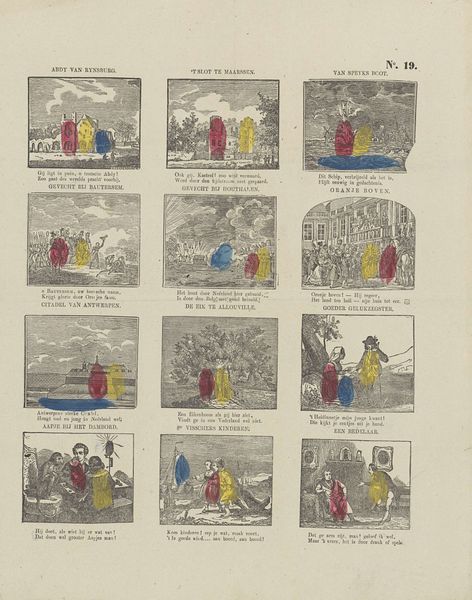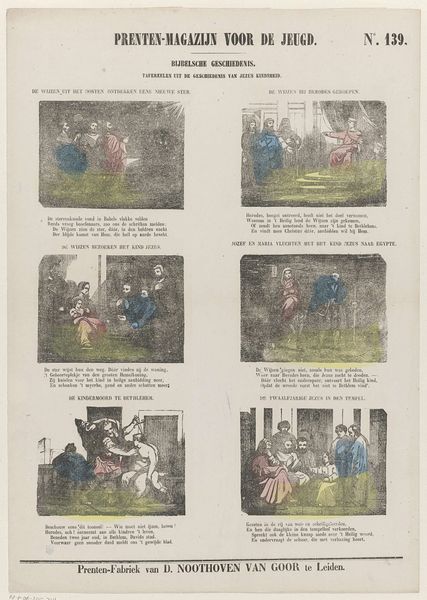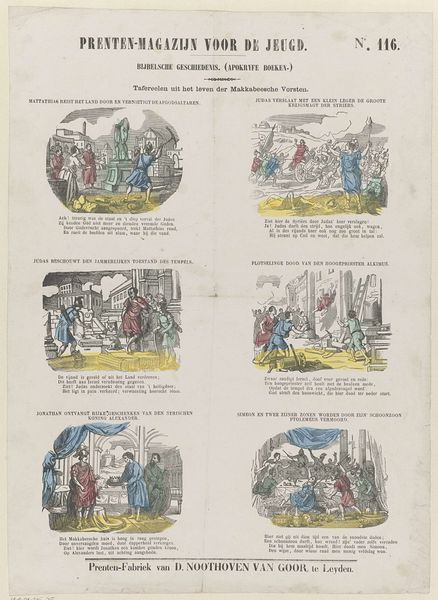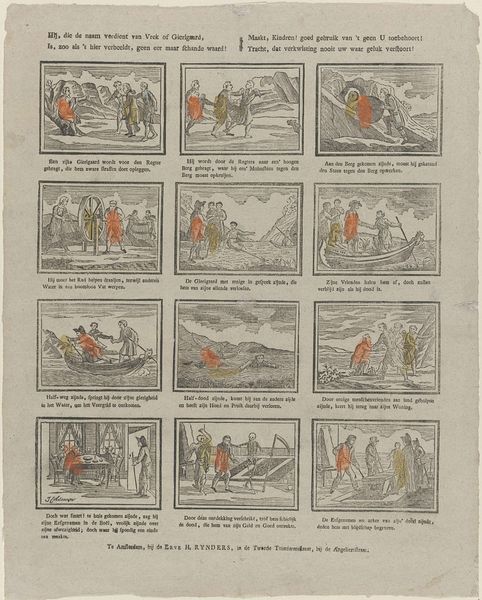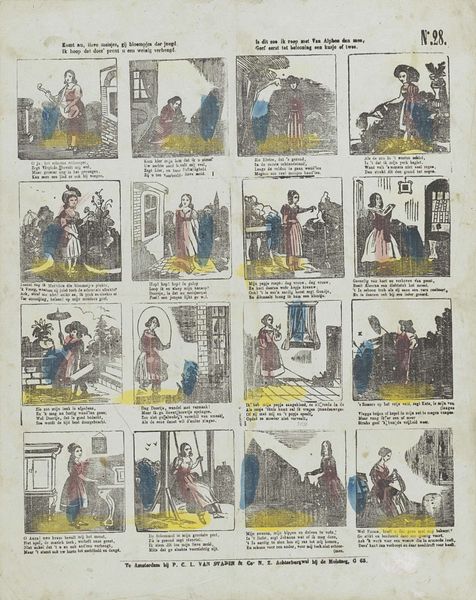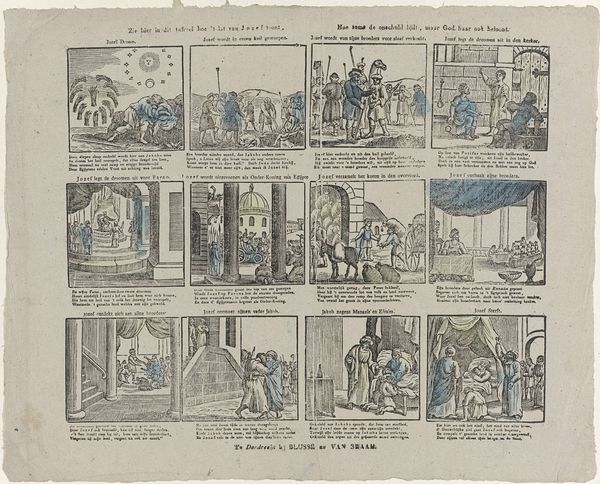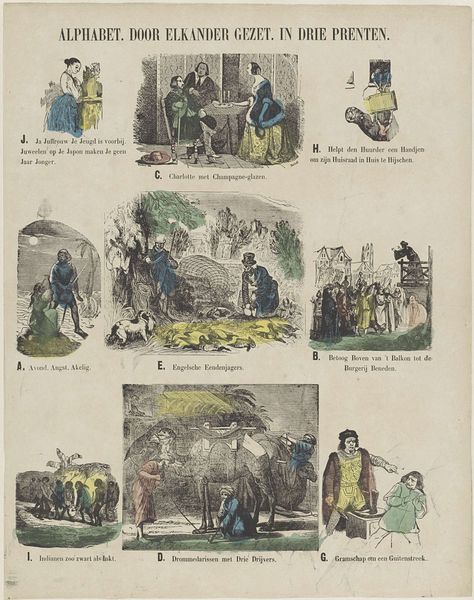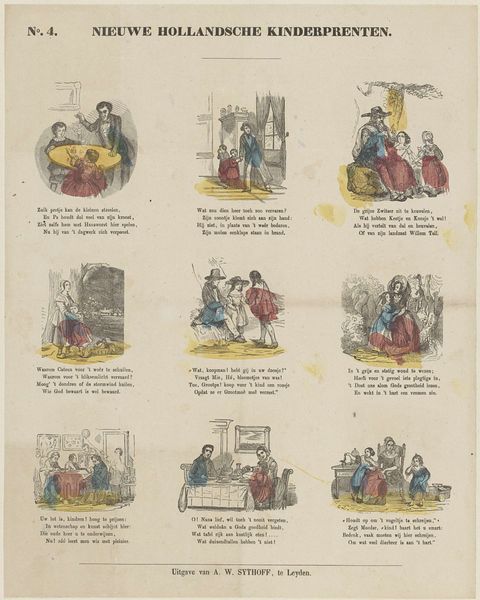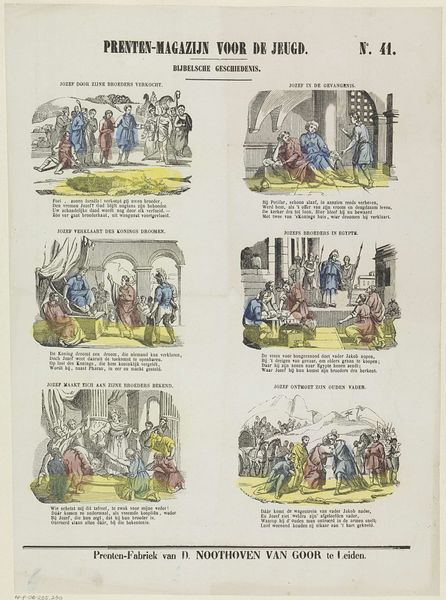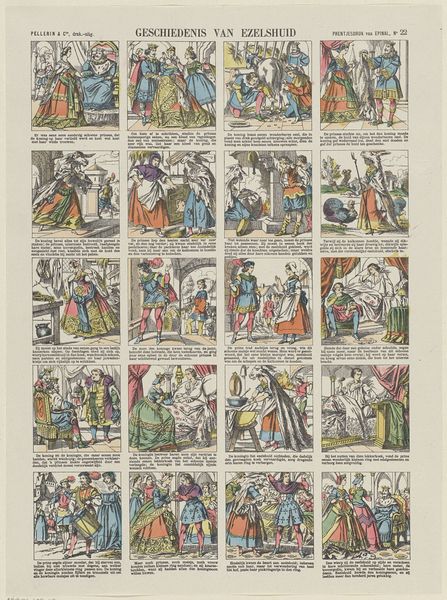
graphic-art, print, watercolor
#
graphic-art
#
narrative-art
# print
#
watercolor
#
watercolour illustration
#
genre-painting
Dimensions: height 289 mm, width 371 mm
Copyright: Rijks Museum: Open Domain
Curator: Here we have a page from a children’s book dating from around 1850 to 1870, currently held at the Rijksmuseum. It's titled "Ziet hier ô kinderen afgebeeld het volgende, als:", credited to P.C.L. van Staden & Co. It’s a combination of graphic art, including prints and watercolors. Editor: My initial impression is of a faded storybook, melancholic in tone. The panels feel cramped, and the limited color palette – mainly reds and blues washed over the drawings – gives it a feeling of weariness, almost like a set of faded tapestries. Curator: What strikes me is how each small scene offers a window into different working-class occupations: sailors leaving, poor Savoyards, scenes relating to fishing. We’re seeing the diverse labor that sustained 19th-century society, reproduced and commodified in printed form. The rough quality also underscores that this was intended for mass consumption, not as a unique art object. Editor: Yes, each little vignette has its own set of repeating symbols. I keep seeing figures adorned in a red hue throughout each mini story; what is its emphasis and why does it command center stage within each individual graphic scene? Curator: The choice of watercolor, a readily available and easily reproduced medium, allowed for a wider distribution, educating children with light morals and lessons conveyed from scene to scene. There’s even a nod to the book’s commercial reality with the mention of baked goods – it’s speaking to immediate desires and to industry. Editor: Absolutely! It seems many vignettes portray situations dealing with misfortune, struggle, and hardship for children during this particular time. What are the significance of the figures with heads adorned in the colors of blues to amplify a particular mood for each respective moment. Curator: Precisely. By analyzing the materials and means of its distribution, it reveals the social and economic realities it was immersed within. The labor required for its production reflects society and also its values in the end. Editor: Well, it's certainly offered an interesting glimpse into a bygone era, with some insight as well as melancholy. Curator: Indeed. Examining the book reveals how simple imagery can convey a range of information depending on the time era for it to be both consumed and distributed from that perspective.
Comments
No comments
Be the first to comment and join the conversation on the ultimate creative platform.
